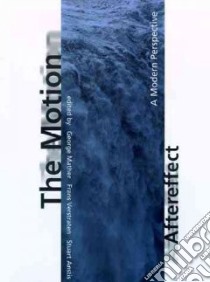The Motion Aftereffect - 9780262133432
Un libro in lingua di Mather George (EDT) Verstraten Frans (EDT) Anstis S. M. (EDT) edito da Mit Pr, 1998
- € 35.10
- Il prezzo è variabile in funzione del cambio della valuta d’origine
Motion perception lies at the heart of the scientific study of vision. The motion aftereffect (MAE), probably the best known phenomenon in the study of visual illusions, is the appearance of directional movement in a stationary object or scene after the viewer has been exposed to visual motion in the opposite direction. For example, after one has looked at a waterfall for a period of time, the scene beside the waterfall may appear to move upward when ones gaze is transferred to it. Although the phenomenon seems simple, research has revealed surprising complexities in the underlying mechanisms, and offered general lessons about how the brain processes visual information. In the last decade alone, more than 200 papers have been published on MAE, largely inspired by improved techniques for examining brain electrophysiology and by emerging new theories of motion perception. The contributors to this volume are all active researchers who have helped to shape the modern conception of MAE.Contributors : David Alais, Stuart Anstis, Patrick Cavanagh, Jody Culham, John Harris, Michelle Kwas, Timothy Ledgeway, George Mather, Bernard Moulden, Michael Niedeggen, Shin'ya Nishida, Allan Pantle, Robert Patterson, Jane Raymond, Michael Swanston, Peter Thompson, Frans Verstraten, Michael von Grunau, Nicolas Wade, Eugene Wist.
Informazioni bibliografiche
- Titolo del Libro in lingua: The Motion Aftereffect
- Sottotitolo: A Modern Perspective
- Lingua: English
- Autori : Mather George (EDT) Verstraten Frans (EDT) Anstis S. M. (EDT)
- Editore: Mit Pr
- Collana: Mit Pr (Hardcover)
- Data di Pubblicazione: 20 Settembre '98
- Genere: PSYCHOLOGY
- Argomenti : Motion perception (Vision Neuropsychology After-images
- Pagine: 220
- Dimensioni mm: 241 x 165 x 25
- ISBN-10: 0262133431
- EAN-13: 9780262133432


